Creating captivating containers
Michigan’s trial gardens provide inspiration for designing your combination containers.

I eagerly look out the window. YES! It’s sunny. I pull up the weather app while I drink my morning coffee. YES! The lowest temperature in the 10-day forecast in Grand Rapids, Michigan, is 48 degrees Fahrenheit. Michigan State University Extension has a table on statewide frost-free dates, which is a great reference for historical averages, and the climatologists are predicting above average temperatures and rainfall for the rest of the month. What does this mean? It’s time to shop for plants! I have seen some excellent memes on social media that totally embody my viewpoint (Photo 1).
Every year I like to change up the plants in containers on my deck and around the garden. What should I plant this year? First, Michigan State University Extension recommends pulling up photos from different time periods of last summer and reflecting on your choices for last year. What worked? What didn’t?
Consider your location
Your primary concern for container locations should be the amount of sun they will get. North or eastern exposures of your house or locations under trees will be more suited towards shade-loving plants than the southern or westerly exposures. You should also consider wind.
For me, I reflected on the banana plants I had served as a “thriller” in my deck containers – they were show-stopping, but my deck gets strong westerly winds that tattered the leaves during summer thunderstorms, which only increased later into the fall (Photo 2). For that very same reason, a floppier plant such as the Zahara zinnias did not do very well in that same location in a saddle planter on my deck railing. On the other hand, my eastern-facing front porch was great for shade plants as it gets morning sun and is shielded by the house from the most severe winds from summer storms.
I frequently visit plant trial gardens and am amazed at municipalities and their awesome petunia and calibrachoa baskets and planters (Photos 3 and 4). However, as heavy feeders, petunias and calibrachoas need frequent fertilizer applications to stay looking sharp all season long. I am lucky to get my dozen planters watered everyday much less fertilized, so they are probably not the plants for me. Similarly, New Guinea impatiens are beautiful but can wilt quickly with high winds and bright sun. If your watering frequency is a little interment, then that might not be the best choice for you either. I often opt for begonias for part sun locations as they are so beautiful and do not need such frequent watering and fertilization.
For more examples of drought-tolerant plants, reference our Smart Gardening factsheet on this topic, “Drought tolerant plants save you water, money and time.”
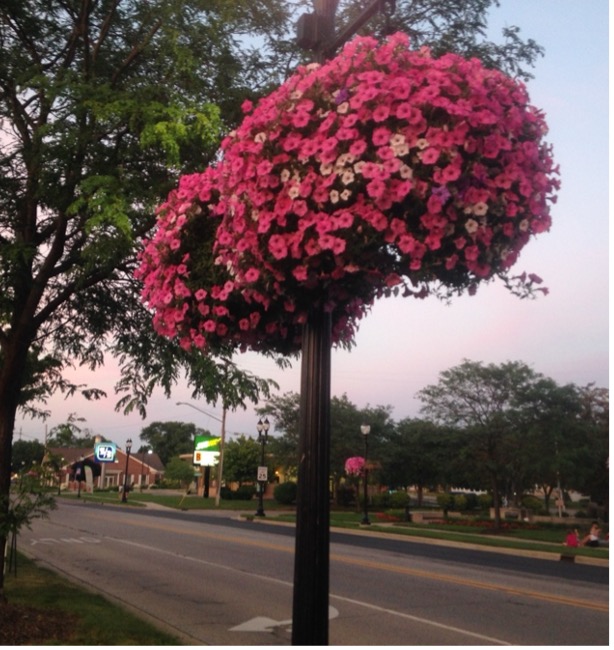
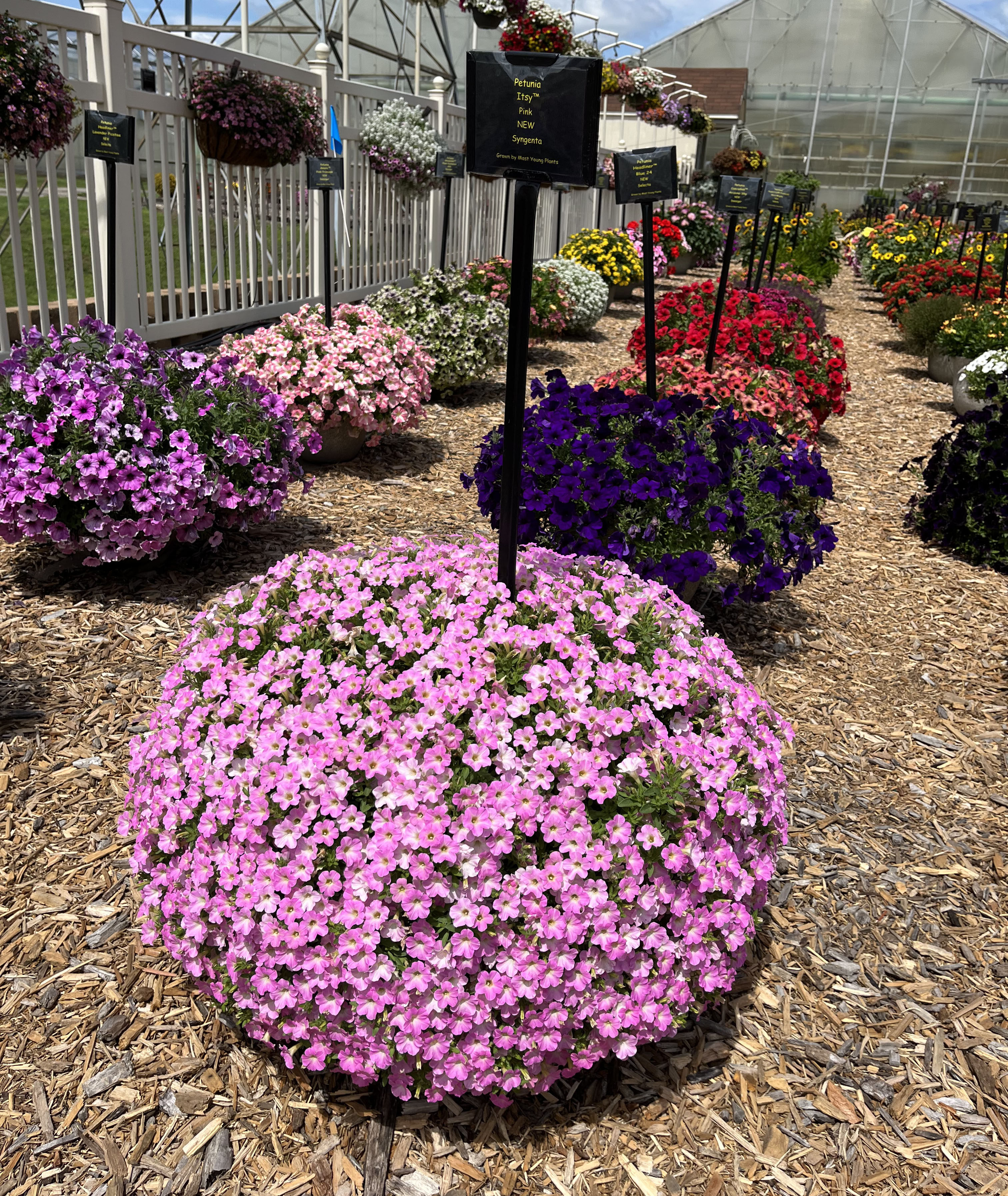
Container ideas from trial gardens
Every year the Michigan Garden Plant Tour features young plant growers who provide trial or demonstration gardens with their varieties. They showcase plants in their catalogs in trial gardens both in the ground and in containers. Last year, Michigan State University Extension educators chose their favorite plants from each location. You can read about them in “Top four ‘favs’ from each Michigan Garden Plant Tour Site.” Here are some great combinations to try:
Monotone color combinations: For those that like it hot!

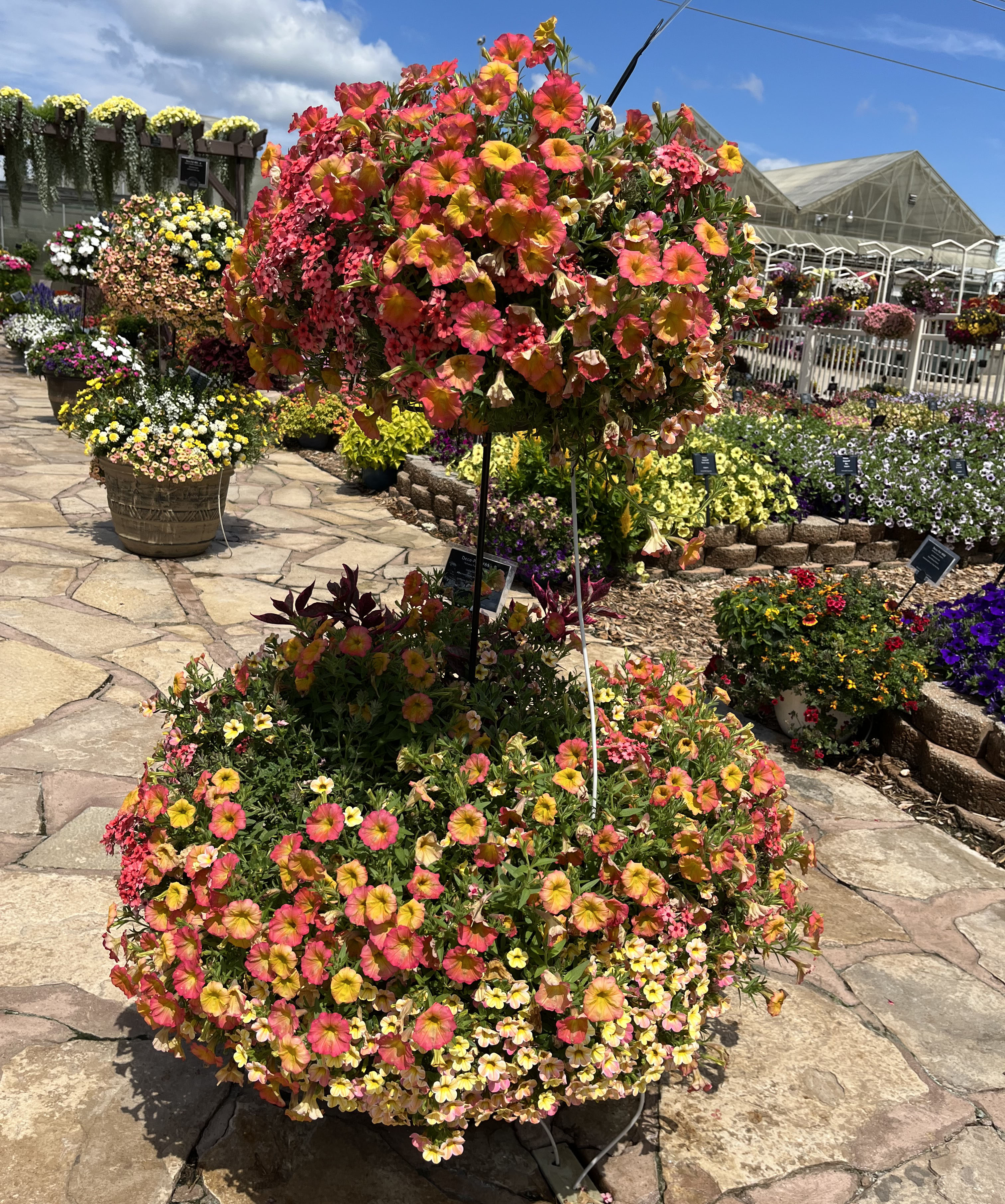

These mono-tone orange planters all caught my eye. They all feature warm and hot colors sure to spice up the garden:
- Clementine combination planter (Photo 5):
- Double Calibrachoa Superbells ‘Double Amber’ – Proven Winners
- Calibrachoa Superbells ‘Dreamsicle’ – Proven Winners
- Cuphea ‘Vermillionaire’ – Proven Winners
- Peach combination planter (Photo 6):
- Petunia ‘Fun House Papaya’
- Calibrachoa ‘Carmel’
- Alternanthera ‘Brazilian Red Hots’
- Verbena ‘Lascar Mango Orange’
- Bronze combination (Photo 7):
- Calibrachoa ‘Calitastic Cappuccino’
- Canna ‘Cannova Bronze Peach’
- Coleus ‘Under the Sea King Crab’
- Ipomoea ‘Sweet Georgia Heart Chestnut’
- Petchoa ‘Supercal Premium Red Maple’
The blues: For those that like it cool!
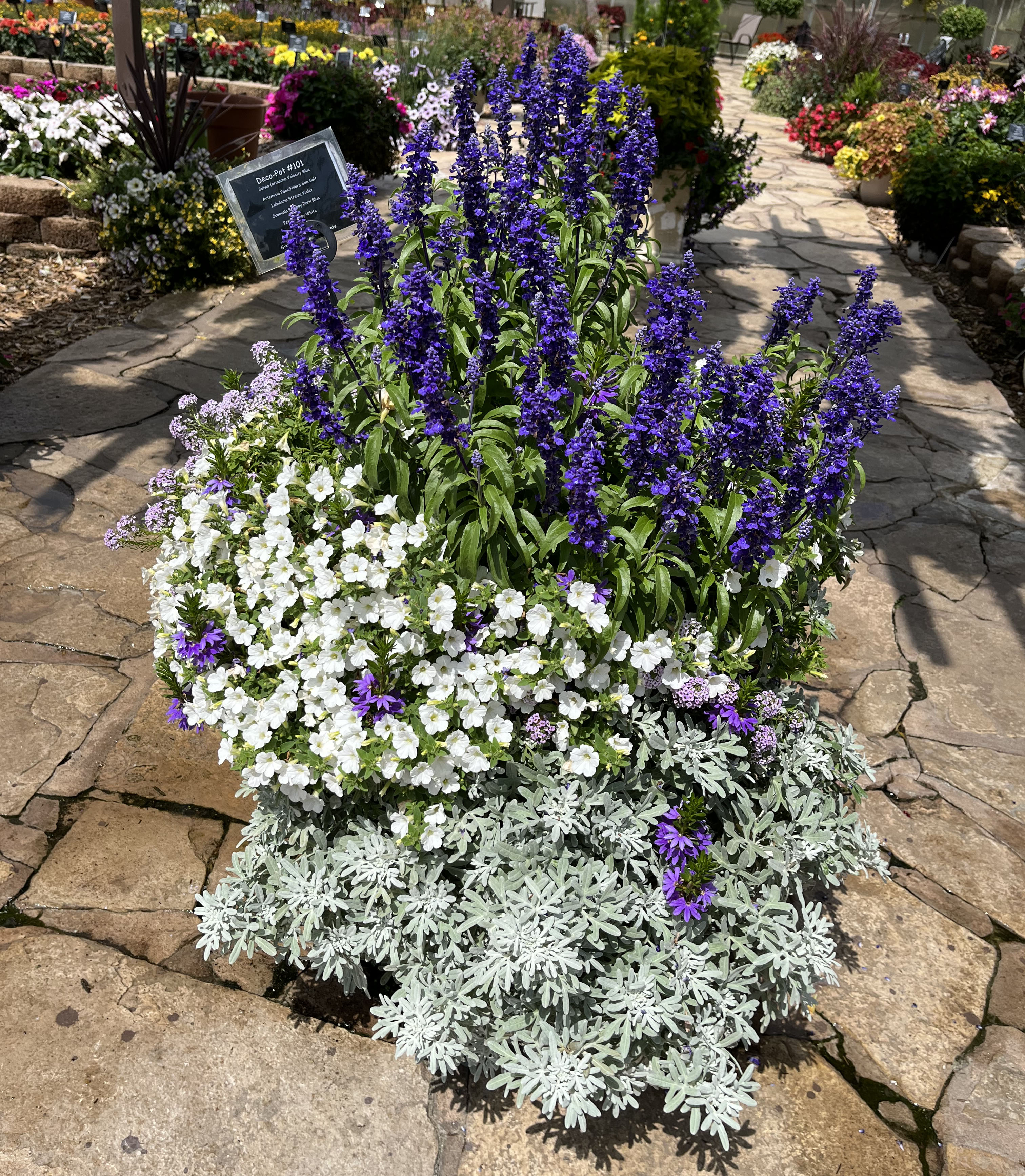
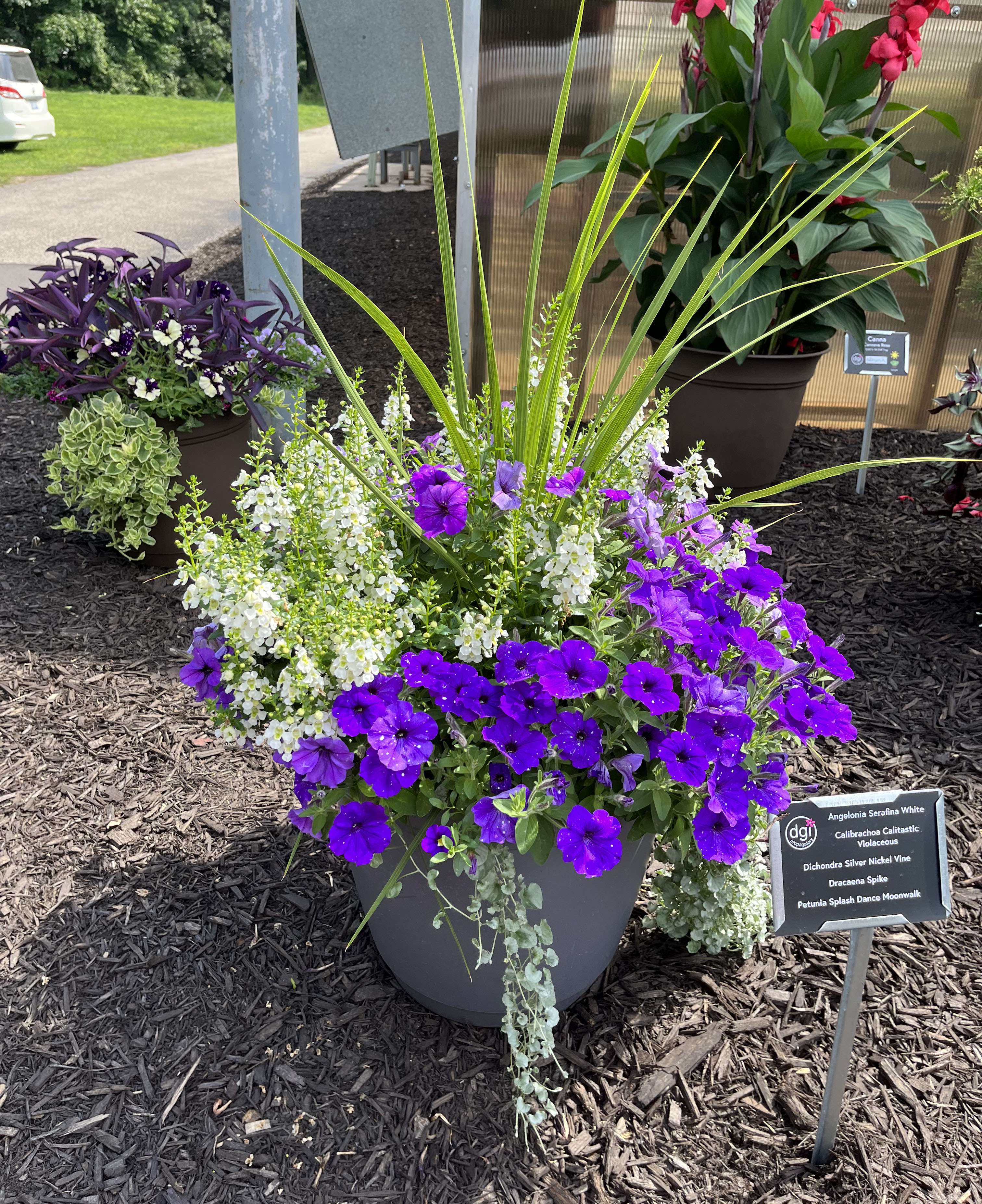
Blue and purple hues are striking when paired with white flowers and silver foliage. These cool colors will add some calm to your garden:
- Blue and silver combination planter (Photo 8):
- Salvia farinacea ‘Velocity Blue’
- Artemisia ‘FanciFillers Sea Salt’
- Lobularia ‘Stream Violet’
- Scaevola ‘Bombay Dark Blue’
- Petunia ‘Itsy White’
- Blue and white combination (Photo 9):
- Angelonia ‘Serfina White’
- Calibrachoa ‘Calitastic Violaceous’
- Dichondra ‘Silver Falls’
- Draceana (spike)
- Petunia ‘Splash Dance Moonwalk’
For more advice on creating pairings, check out the tip sheets by Bridget Behe, PhD, on container gardening for both sunny and shady areas. And for a deeper dive into smart landscape design, check out our tip sheet, “Water-smart landscapes by design.” Michigan State University Extension helps you to work smarter in the garden and have a positive impact for the environment.



 Print
Print Email
Email

